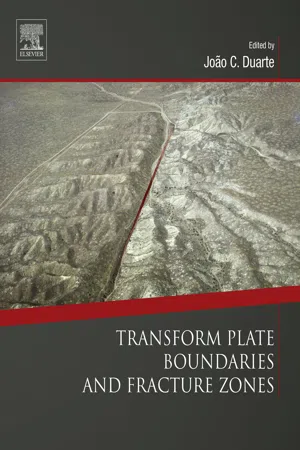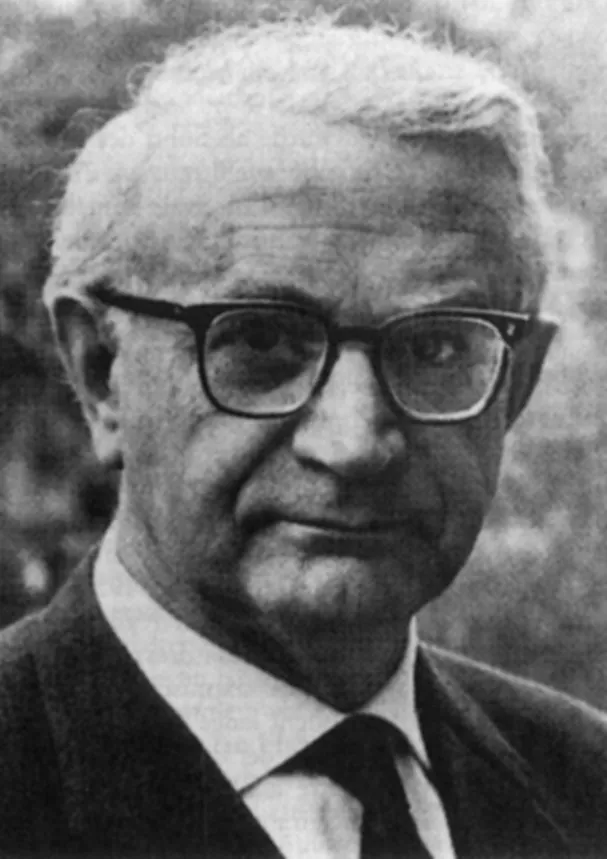
- 478 pages
- English
- ePUB (mobile friendly)
- Available on iOS & Android
Transform Plate Boundaries and Fracture Zones
About this book
Transform Plate Boundaries and Fracture Zones bridges the gap between the classic plate tectonic theory and new emerging ideas, offering an assessment of the state-of-the-art, pending questions, and future directions in the study of transform plate boundaries and fracture zones. The book includes a number of case studies and reviews on both oceanic and continental tectonic settings.Transform Plate Boundaries and Fracture Zones is a timely reference for a variety of researchers, including geophysicists, seismologists, structural geologists and tectonicists, as well as specialists in exploration geophysics and natural hazards. This book can also be used as an up-to-date reference at universities in both undergraduate and postgraduate levels.- Reviews ideas and concepts about transform plate boundaries and fracture zones- Includes a variety of case studies on both oceanic and continental settings- Addresses innovative and provocative ideas about the activity of fracture zones and transform faults and their impacts to the human society
Frequently asked questions
- Essential is ideal for learners and professionals who enjoy exploring a wide range of subjects. Access the Essential Library with 800,000+ trusted titles and best-sellers across business, personal growth, and the humanities. Includes unlimited reading time and Standard Read Aloud voice.
- Complete: Perfect for advanced learners and researchers needing full, unrestricted access. Unlock 1.4M+ books across hundreds of subjects, including academic and specialized titles. The Complete Plan also includes advanced features like Premium Read Aloud and Research Assistant.
Please note we cannot support devices running on iOS 13 and Android 7 or earlier. Learn more about using the app.
Information
Franz Lotze and the Origin of the Idea of Transform Faulting in Central Europe
† İTÜ Eurasia Institute of Earth Sciences, İstanbul, Turkey
Abstract
Keywords
1 Introduction

2 Post-Hercynian Tectonics of Central Europe
Table of contents
- Cover image
- Title page
- Table of Contents
- Copyright
- Contributors
- Preface
- Chapter 1: Franz Lotze and the Origin of the Idea of Transform Faulting in Central Europe
- Chapter 2: Global Characteristics of Oceanic Transform Fault Structure and Seismicity
- Chapter 3: Topographic and Morphologic Evidences of Deformation at Oceanic Transform Faults: Far-Field and Local-Field Stresses
- Chapter 4: Reactivation of Oceanic Fracture Zones in Large Intraplate Earthquakes?
- Chapter 5: Mineralization at Oceanic Transform Faults and Fracture Zones
- Chapter 6: Seismic Behavior on Oceanic Transform Faults at the East Pacific Rise
- Chapter 7: Structural Reorganization of the India-Arabia Strike-Slip Plate Boundary (Owen Fracture Zone; NW Indian Ocean) 2.4 million years ago
- Chapter 8: The Gloria Transform Fault—NE Atlantic: Seismogenic and Tsunamigenic Potential
- Chapter 9: Continental Transform Faults: Congruence and Incongruence With Normal Plate Kinematics☆
- Chapter 10: The San Andreas Fault System: Complexities Along a Major Transform Fault System and Relation to Earthquake Hazards
- Chapter 11: Spatial and Temporal Distributions of Deformation in Strike-Slip Faults: The Karakoram Fault in the India-Asia Collision Zone
- Chapter 12: Stretching Transforms—Mediterranean Examples From the Betic-Alborán, Tyrrhenian-Calabrian and Aegean-Anatolia Regions
- Chapter 13: Strike-Slip Faulting in the Calabrian Accretionary Wedge: Using Analog Modeling to Test the Kinematic Boundary Conditions of Geodynamic Models
- Chapter 14: Plio-Quaternary Extension and Strike-Slip Tectonics in the Aegean
- Chapter 15: Strike-Slip Fault Systems Along the Northern Caribbean Plate Boundary
- Chapter 16: Morphotectonics of the Sea of Marmara: Basins and Highs on the North Anatolian Continental Transform Plate Boundary
- Chapter 17: Tectonic Segmentation of the Dead Sea Fault System: A Review of Geophysical Evidence
- Chapter 18: On Seismicity and Structural Style of Oceanic Transform Faults: A Field Geological Perspective From the Troodos Ophiolite, Cyprus
- Index